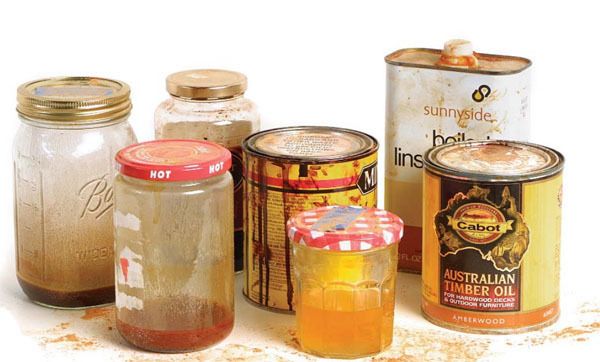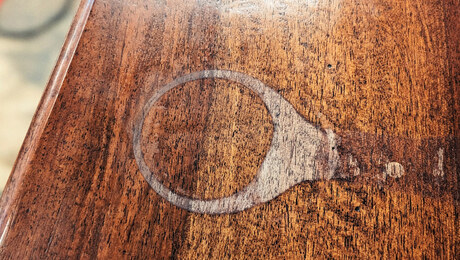Keep Your Finish Fresh
All finishes have a shelf life, but you can learn how to keep your leftover products from expiring prematurely
Synopsis: Even when stored unopened in ideal conditions, finishes deteriorate. And a finish that’s going bad is not one you want to use on your carefully crafted project. In this article, finisher Andy Charron offers strategies for extending the useful life of your shellacs and varnishes. He also explains how to distinguish a still usable product from one that’s gone bad.
Your shop probably has a shelf cluttered with cans, jars, and bottles of finish left over from previous projects. Some of the containers aren’t labeled, so the contents are a mystery; others are so old that the lids and tops are either glued on tight or won’t seal at all. These leftovers represent a waste of material and space, because the fact is you shouldn’t let the vast majority of old finishes anywhere near your next project.
Although there are ways to preserve finishes for a time and to determine whether leftovers are still viable, minimizing waste starts at the time of purchase. You should make a habit of buying the smallest amount of finish you need for the job at hand. That way, you won’t have to store a lot of material for a long time. In fact, it may be a false economy to buy a gallon of finish once instead of smaller containers on different occasions.
All finishes have a shelf life
It might be better if woodworkers treated finishes as they do food: You don’t expect that slab of cheese in the fridge to be edible a year from now. Would you risk your health eating a dubious piece of steak rather than buying more? Of course not. Yet woodworkers happily keep cans of varnish for years and think nothing of finishing their latest masterpiece with old shellac rather than mixing a new batch.
Even when stored unopened in ideal conditions, finishes deteriorate. In the case of varnish, the metallic driers gradually lose their effectiveness. The deterioration is faster with semigloss and satin varnishes as the flattening agents react with the driers. If satin varnish from a fresh can dries in two to three hours, varnish from a two-year-old can probably will take an hour or two longer; varnish that’s beyond three years old probably never will cure fully.
From Fine Woodworking #173
For the full article, download the PDF below:
Fine Woodworking Recommended Products

Osmo Polyx-Oil

Foam Brushes

Odie's Oil





















Log in or create an account to post a comment.
Sign up Log in